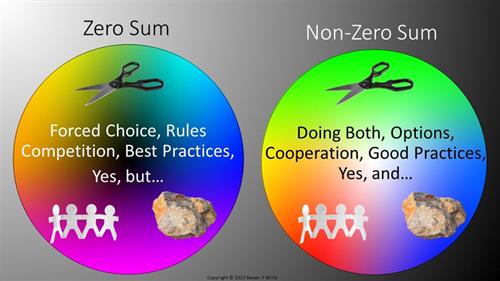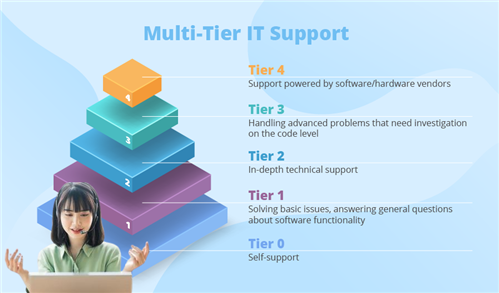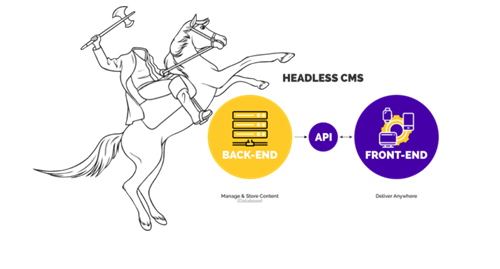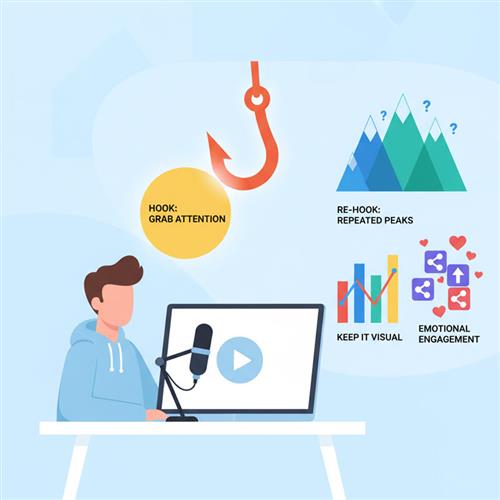
Leading Remote Teams in Hybrid Work Environments
Last updated: July 25, 2025 Read in fullscreen view
- 10 Apr 2022
 Agile self-organizing teams: What are they? How do they work? 28/435
Agile self-organizing teams: What are they? How do they work? 28/435 - 18 Oct 2020
 How to use the "Knowns" and "Unknowns" technique to manage assumptions 21/989
How to use the "Knowns" and "Unknowns" technique to manage assumptions 21/989 - 05 Oct 2025
 The New Facebook Algorithm: A Paradigm Shift in Content Discovery 19/46
The New Facebook Algorithm: A Paradigm Shift in Content Discovery 19/46 - 21 May 2022
 "Fail Fast, Fail Often, Fail Forward" is the answer to Agile practices of software success 18/941
"Fail Fast, Fail Often, Fail Forward" is the answer to Agile practices of software success 18/941 - 01 Oct 2020
 Fail fast, learn faster with Agile methodology 13/973
Fail fast, learn faster with Agile methodology 13/973 - 03 Nov 2023
 Why Is Billable Viable Product An Alternative To Minimum Viable Product? 12/165
Why Is Billable Viable Product An Alternative To Minimum Viable Product? 12/165 - 21 Sep 2023
 Abraham Wald and the Missing Bullet Holes 9/598
Abraham Wald and the Missing Bullet Holes 9/598 - 30 Jul 2024
 The Future of IT Consulting: Trends and Opportunities 8/131
The Future of IT Consulting: Trends and Opportunities 8/131 - 18 Jul 2024
 The 8 Best ways to Innovate your SAAS Business Model in 2024 8/204
The 8 Best ways to Innovate your SAAS Business Model in 2024 8/204 - 10 Nov 2022
 Poor Code Indicators and How to Improve Your Code? 7/213
Poor Code Indicators and How to Improve Your Code? 7/213 - 19 Oct 2021
 Is gold plating good or bad in project management? 7/754
Is gold plating good or bad in project management? 7/754 - 06 Feb 2021
 Why fail fast and learn fast? 6/375
Why fail fast and learn fast? 6/375 - 01 Mar 2023
 Bug Prioritization - What are the 5 levels of priority? 6/207
Bug Prioritization - What are the 5 levels of priority? 6/207 - 27 Jul 2024
 Positive Psychology in the Digital Age: Future Directions and Technologies 6/337
Positive Psychology in the Digital Age: Future Directions and Technologies 6/337 - 11 Oct 2022
 Why choose Billable Viable Product (BVP) over Minimum Viable Product (MVP) 5/315
Why choose Billable Viable Product (BVP) over Minimum Viable Product (MVP) 5/315 - 20 Nov 2022
 Agile working method in software and football 5/323
Agile working method in software and football 5/323 - 14 Oct 2021
 Advantages and Disadvantages of Time and Material Contract (T&M) 4/789
Advantages and Disadvantages of Time and Material Contract (T&M) 4/789 - 08 Oct 2022
 KPI - The New Leadership 3/557
KPI - The New Leadership 3/557 - 31 Oct 2021
 Tips to Fail Fast With Outsourcing 3/375
Tips to Fail Fast With Outsourcing 3/375 - 18 Aug 2022
 What are the consequences of poor requirements with software development projects? 3/242
What are the consequences of poor requirements with software development projects? 3/242 - 27 Feb 2025
 How AI Agents are Changing Software Development? 3/170
How AI Agents are Changing Software Development? 3/170 - 09 Oct 2024
 Short-Form Video Advertising: The Secret to Captivating Your Audience 3/107
Short-Form Video Advertising: The Secret to Captivating Your Audience 3/107 - 12 May 2024
 The Pros and Cons of the Creator Economy in the Age of AI: Opportunities, Challenges, and the Gray Zone with the Gig Economy 3/231
The Pros and Cons of the Creator Economy in the Age of AI: Opportunities, Challenges, and the Gray Zone with the Gig Economy 3/231 - 18 Aug 2024
 The Future of Web Development: Emerging Trends and Technologies Every Developer Should Know 2/173
The Future of Web Development: Emerging Trends and Technologies Every Developer Should Know 2/173 - 03 Jul 2022
 Manifesto for Agile Software Development 2/240
Manifesto for Agile Software Development 2/240 - 10 Jan 2024
 Like for Like – how to preserves existing business and leverage technological advancement 2/336
Like for Like – how to preserves existing business and leverage technological advancement 2/336 - 25 Jan 2025
 The Decline of Traditional SaaS and the Rise of AI-first Applications 2/73
The Decline of Traditional SaaS and the Rise of AI-first Applications 2/73 - 26 Sep 2024
 Successful Project Management Techniques You Need to Look Out For 2/368
Successful Project Management Techniques You Need to Look Out For 2/368 - 28 Dec 2021
 8 types of pricing models in software development outsourcing 2/417
8 types of pricing models in software development outsourcing 2/417 - 10 Dec 2023
 Pain points of User Acceptance Testing (UAT) 2/416
Pain points of User Acceptance Testing (UAT) 2/416 - 21 Dec 2023
 Top 12 Low-Code Platforms To Use in 2024 2/1147
Top 12 Low-Code Platforms To Use in 2024 2/1147 - 31 Dec 2022
 The New Normal for Software Development 2/343
The New Normal for Software Development 2/343 - 23 Sep 2021
 INFOGRAPHIC: Top 9 Software Outsourcing Mistakes 2/411
INFOGRAPHIC: Top 9 Software Outsourcing Mistakes 2/411 - 17 Feb 2022
 Prioritizing Software Requirements with Kano Analysis 2/280
Prioritizing Software Requirements with Kano Analysis 2/280 - 13 Dec 2020
 Move fast, fail fast, fail-safe 2/292
Move fast, fail fast, fail-safe 2/292 - 12 Oct 2020
 The Agile Manifesto - Principle #8 2/447
The Agile Manifesto - Principle #8 2/447 - 07 Oct 2020
 How To Manage Expectations at Work (and Why It's Important) 2/266
How To Manage Expectations at Work (and Why It's Important) 2/266 - 19 Apr 2021
 7 Most Common Time-Wasters For Software Development 1/525
7 Most Common Time-Wasters For Software Development 1/525 - 26 Dec 2023
 Improving Meeting Effectiveness Through the Six Thinking Hats 1/205
Improving Meeting Effectiveness Through the Six Thinking Hats 1/205 - 05 Jan 2024
 Easy ASANA tips & tricks for you and your team 1/180
Easy ASANA tips & tricks for you and your team 1/180 - 11 Jan 2024
 What are the Benefits and Limitations of Augmented Intelligence? 1/434
What are the Benefits and Limitations of Augmented Intelligence? 1/434 - 03 Jan 2024
 Why Partnership is important for Growth? 1/145
Why Partnership is important for Growth? 1/145 - 31 Dec 2022
 Future of Software Development Trends and Predictions for 2023 1/120
Future of Software Development Trends and Predictions for 2023 1/120 - 16 Aug 2022
 What is a Headless CMS? 1/225
What is a Headless CMS? 1/225 - 16 Sep 2022
 Examples Of Augmented Intelligence In Today’s Workplaces Shaping the Business as Usual 1/394
Examples Of Augmented Intelligence In Today’s Workplaces Shaping the Business as Usual 1/394 - 02 Dec 2024
 The Intersection of AI and Business Analytics: Key Concepts to Master in Your Business Analytics Course 1/252
The Intersection of AI and Business Analytics: Key Concepts to Master in Your Business Analytics Course 1/252 - 20 Feb 2025
 How Machine Learning is Shaping the Future of Digital Advertising 1/76
How Machine Learning is Shaping the Future of Digital Advertising 1/76 - 04 Apr 2025
 To Act or Not to Act – A Manager’s Persistent Dilemma 1/62
To Act or Not to Act – A Manager’s Persistent Dilemma 1/62 - 20 Aug 2025
 What Is Agentic AI? The Next Phase of Artificial Intelligence 1/96
What Is Agentic AI? The Next Phase of Artificial Intelligence 1/96 - 23 May 2024
 Mastering AI: Sharpening the Axe in the Digital Age 1/182
Mastering AI: Sharpening the Axe in the Digital Age 1/182 - 22 Nov 2024
 The Role of AI in Enhancing Business Efficiency and Decision-Making 1/154
The Role of AI in Enhancing Business Efficiency and Decision-Making 1/154 - 09 Sep 2024
 How AI Rewriting Can Improve Your Content’s SEO Performance /140
How AI Rewriting Can Improve Your Content’s SEO Performance /140 - 10 Sep 2024
 AI in Email Marketing: Personalization and Automation /154
AI in Email Marketing: Personalization and Automation /154 - 12 Sep 2024
 Be Water, My Friend: Fluidity, Flow & Going With the Flow /149
Be Water, My Friend: Fluidity, Flow & Going With the Flow /149 - 25 Sep 2024
 Enhancing Decision-Making Skills with an MBA: Data-Driven Approaches for Business Growth /177
Enhancing Decision-Making Skills with an MBA: Data-Driven Approaches for Business Growth /177 - 18 Jan 2024
 Self-healing code is the future of software development /200
Self-healing code is the future of software development /200 - 14 Mar 2024
 Why should you opt for software localization from a professional agency? /117
Why should you opt for software localization from a professional agency? /117 - 19 Dec 2023
 How AI is Transforming Software Development? /275
How AI is Transforming Software Development? /275 - 12 Mar 2024
 How do you create FOMO in software prospects? /127
How do you create FOMO in software prospects? /127 - 15 Aug 2025
 Quantum Technology: Global Challenges and Opportunities for Innovators /56
Quantum Technology: Global Challenges and Opportunities for Innovators /56 - 23 Jun 2025
 AI Avatars in the Metaverse: How Digital Beings Are Redefining Identity and Social Interaction /85
AI Avatars in the Metaverse: How Digital Beings Are Redefining Identity and Social Interaction /85 - 01 Jun 2022
 How Your Agile Development Team is Just Like a Football Team? /206
How Your Agile Development Team is Just Like a Football Team? /206 - 02 Nov 2022
 Frequently Asked Questions about Agile and Scrum /372
Frequently Asked Questions about Agile and Scrum /372 - 16 Jul 2022
 What are disadvantages of Agile Methodology? How to mitigate the disadvantages ? /353
What are disadvantages of Agile Methodology? How to mitigate the disadvantages ? /353 - 28 Nov 2023
 Scrum Team Failure — Scrum Anti-Patterns Taxonomy (3) /228
Scrum Team Failure — Scrum Anti-Patterns Taxonomy (3) /228 - 01 Mar 2022
 Why Does Scrum Fail in Large Companies? /243
Why Does Scrum Fail in Large Companies? /243 - 01 Dec 2022
 Difference between Set-based development and Point-based development /298
Difference between Set-based development and Point-based development /298 - 31 Dec 2023
 Software Development Outsourcing Trends to Watch Out for in 2024 /160
Software Development Outsourcing Trends to Watch Out for in 2024 /160 - 27 Oct 2020
 8 principles of Agile Testing /1195
8 principles of Agile Testing /1195 - 21 Oct 2022
 Virtual meeting - How does TIGO save cost, reduce complexity and improve quality by remote communication? /166
Virtual meeting - How does TIGO save cost, reduce complexity and improve quality by remote communication? /166 - 06 Nov 2019
 How to Access Software Project Size? /236
How to Access Software Project Size? /236 - 09 Oct 2022
 Key Advantages and Disadvantages of Agile Methodology /666
Key Advantages and Disadvantages of Agile Methodology /666 - 10 Oct 2022
 Should Your Business Go Agile? (Infographic) /107
Should Your Business Go Agile? (Infographic) /107
In recent years, the way we work has significantly transformed due to the global lockdown during the COVID-19 pandemic. With remote work, many of us have traded our daily commutes for home offices, and the traditional workplace has shifted into a more flexible environment. While this phenomenon has brought about exciting opportunities, it has also handed out unique challenges for leaders trying to keep their teams connected and engaged.
With many of us now working from the comforts of our own homes, leading remote teams is no longer just about managing tasks. Here are practical strategies that can help leaders ensure their remote teams stay productive and motivated, no matter where they are.
Recognising the Shift in Leadership
One of the first steps in effective leadership is recognising the changes in leadership styles that are necessary for leading remote teams. Leaders must assure their team members that their choices regarding remote or in-office work will not hinder their career development. They must also establish a psychologically safe environment where employees feel comfortable discussing uncertainties and setbacks. This mindset empowers teams to take risks and innovate without fear of negative repercussions.
Furthering Transparent Communication
Transparent communication is the lifeblood of successful remote teams. Leaders should prioritize clarity by regularly scheduling virtual meetings and one-on-one consultations. Engaging your remote team in meaningful conversations can help them feel valued and ensure that their opinions are heard, both of which are essential for collaboration in a hybrid environment.
Setting Clear Goals and Expectations
Vague objectives can impede productivity and lead to confusion. Leaders should draft precise goals, deadlines, and key performance indicators to guide their teams effectively. Such clarity allows team members to understand their roles and how their contributions fit into the larger organizational goals.
Cultivating a Positive Team Culture
A thriving team culture is vital for promoting engagement and collaboration. Leaders should organize virtual team-building activities to build relationships among team members. These can help break down barriers, create a sense of belonging, and make remote workers feel more connected to their colleagues. When team members have strong relationships, they are more likely to be engaged and committed to their work, which ultimately benefits the organization as a whole.
Investing in Technology and Infrastructure
Leaders should allocate resources to secure communication and collaboration tools that facilitate seamless interactions among hybrid teams. The right technology can bridge the gap between in-person and remote employees, as well as ensure that everyone stays connected and informed.
Supporting Work-Life Balance
Promoting a healthy work-life balance is essential for enhancing employee well-being and performance. Leaders must encourage their teams to take time off every once in a while and embrace flexible working hours. Research shows that remote workers often report higher job satisfaction compared to their in-office counterparts.
Addressing Issues Promptly
Effective leaders are proactive in providing support and resources to tackle challenges as they arise. Moreover, addressing issues promptly is essential for maintaining team morale. A leader who can overcome obstacles with agility instills confidence in their team.
Advocating for Continuous Learning
Ongoing education is very important for boosting remote team performance. Leaders should offer access to courses and seminars that enhance their team's skills and knowledge. Investing in professional development improves individual performance and strengthens the team as a whole.
The Growing Demand for Remote Talent
While leaders adapt their styles to effectively manage remote teams, they must also stay informed about employment trends that could impact their workforce. Understanding these trends can help leaders find remote job opportunities that align with their organizational goals. For instance, the healthcare sector is experiencing significant growth, which creates a wealth of opportunities for skilled professionals. Leaders can better position their teams for success and ensure they attract top talent in a competitive job market by keeping an eye on these employment trends.
How to Thrive in the Hybrid Era
Effective leadership is about embracing innovation while promoting a supportive and engaging work environment. The flexibility offered by hybrid work models can improve employee experience, create better team collaboration (when done right), and boost overall productivity. The ability to adapt to ongoing changes and evolving trends is, therefore, essential for consistently reaching organizational goals. Consequently, it is imperative for leaders to recognise the value of a remote and hybrid workforce and implement the measures discussed here to get the most out of the modern work environment.
In conclusion, leading remote teams in a hybrid work environment requires adaptability, transparency, and a deep understanding of the evolving workplace landscape. Leaders must prioritize open communication, set clear expectations, and cultivate a positive team culture to keep remote employees engaged and productive. By investing in the right technology, supporting work-life balance, and promoting continuous learning, leaders can create an environment where both in-office and remote workers thrive. As the demand for remote talent grows, those who embrace these strategies will be better equipped to navigate the future of work and drive their teams toward long-term success.
| About the Author | Mike Infante | Content creator | Mike Infante, copywriter and content creator for JobSpace, a job seeker and recruitment platform based in New Zealand. |


































 Link copied!
Link copied!
 Recently Updated News
Recently Updated News